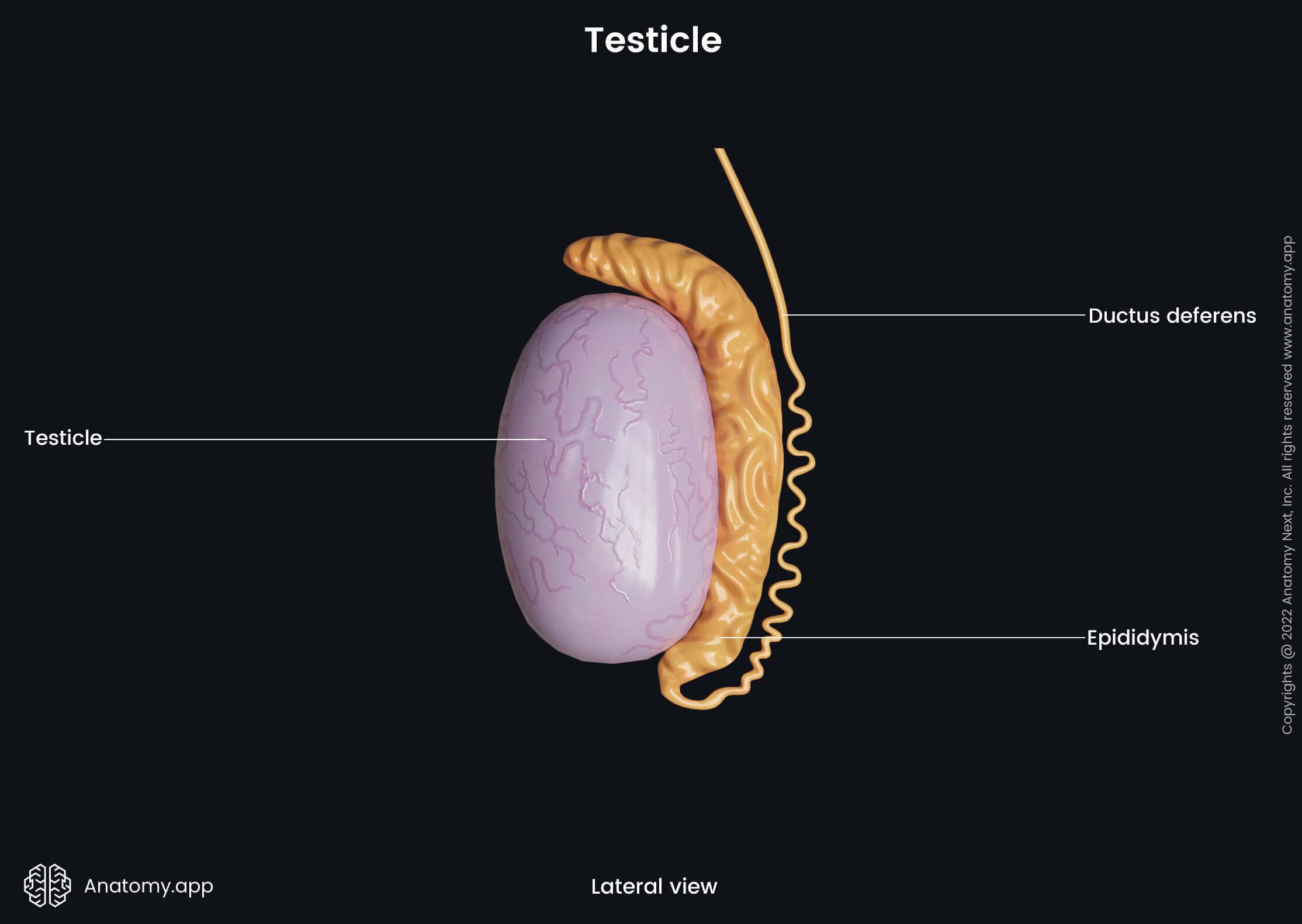Testicles
The testicle or testis is a paired oval-shaped internal genital organ of the male reproductive system. It is the primary male sex gland (they are analogous to the female ovaries), providing both exocrine and endocrine functions. The testicles produce sperm and are the sites where spermatogenesis takes place. Also, these glands produce male sex hormones called androgens (primarily testosterone). Besides the androgens, the testicles also produce small amounts of estrogens.

The testicles are located in the scrotum, together with the epididymides (Read more!) and spermatic cords (Read more!). Within the scrotum, both glands are separated by the scrotal septum - a thin, vertically positioned midline fibrous tissue layer. Each testicle can be palpated through the wall of the scrotum as a soft and smooth structure.
Each testicle is relatively small and resembles an egg in shape and size. It weighs only about 0.71 - 1.06 ounces (20 - 30 grams). On average, the testicle measures about 1.18 to 1.97 inches (3 to 5 centimeters) in length and 0.79 to 1.18 inches (2 to 3 centimeters) in width. Usually, the left testicle is located slightly lower than the right, so the scrotum may appear asymmetric. Additionally, it is common for one testicle to be larger than the other.
The testicles develop retroperitoneally on the posterior abdominal wall within the abdominal cavity and descend through the inguinal canal to the scrotum before birth. This descent is crucial because the scrotum provides a cooler environment, which is needed for spermatogenesis.
Overall, spermatogenesis requires a temperature a few degrees (35.6 - 37.40F (2 - 30C)) lower than the body temperature, so being inside the body exposes the testicle to a higher temperature than necessary. If the testicles do not descend properly, it can lead to conditions like cryptorchidism (undescended testes). Boys with untreated undescended testicles may face fertility problems later in life and have an increased risk of testicular cancer.
During descent, the testicles also carry their neurovasculature and principal drainage ducts. Additionally, as the testicles descend, they push layers of the anterior abdominal wall. These layers extend into the scrotum together with the testicles (internal abdominal oblique muscle and external abdominal oblique muscle and the transversalis fascia). All these structures are placed within or form the spermatic cord, which is a collection of vessels, nerves, lymphatics, and ducts.
After the descent, the testicles remain connected to the abdomen via the spermatic cord. In fact, the spermatic cord suspends the superior pole of the testicle. In contrast, the inferior pole of each testicle is attached to the scrotum via the scrotal ligament (remnant of the gubernaculum testis).
And finally, the outer surface of the testicle is covered by a thick fibrous connective tissue layer called the tunica albuginea. It provides structural support and protection. Above the tunica albuginea, five more covering layers enclose the testicles.